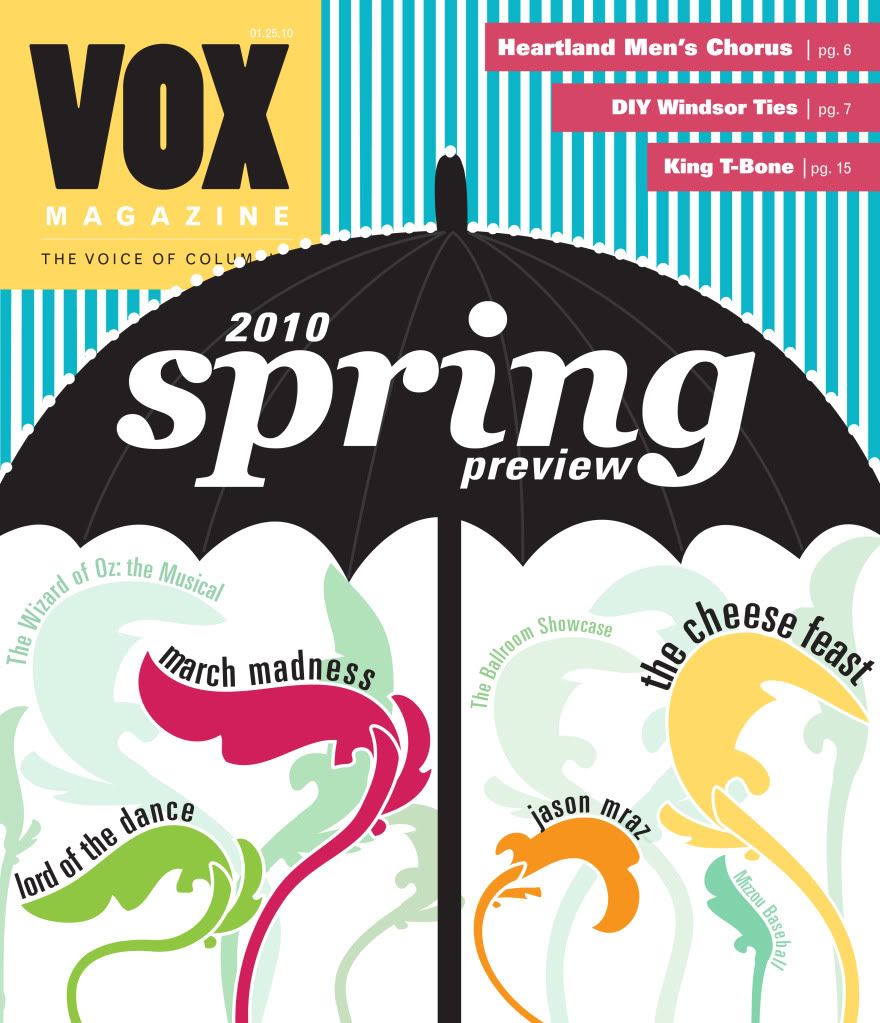This week has been less than peaceful, but I have been learning that that is just the life of an advanced design student because my fellow classmates are stressed out too. So, let's lay out what went down this week.

I participated in another cover design contest, but this time only 4 of us were in the running. I presented my three concepts on Feb. 11. You can see them to the left. I came up with three VERY different concepts. The first one (top left) was kind of an antithesis theme in that the theme was a treasure map about things not having to be a treasure map. Make sense? Didn't think so, that's why the editors didn't like it either. My second one (top right) was based off a "_____ for
Dummies" book you can find basically everywhere. I love the little guy I created! However, it was balancing on copyright infringement and the editors didn't like that one either. The one they told me to work on (the bottom one), was kind of a "one-stop shop" kind of theme with the idea that you could just have one set of wrenches to fix everything. I wanted to engrave the individual items onto the wrenches (more Photoshop, I know).

So I worked on these for the next week's lab where the winner would be chosen. I turned in this design, and I won the competition! However, there was fine print. The editors liked my concept the best, but they said they wanted to see more tools and not just the wrenches. I was confused because other tools wouldn't make sense with household itemed labeling them, but "mine is not to question why..." So, Aimee helped me find some stock image tools on
Stock Exchange and
ClipArt.com. I had a new vision and I was excited about it.

I managed to cut out and interlock a bunch of different tools. I also went with one of the editor's ideas about using
Dymo sticker labels. Luckily, DaFont, an amazing free font
Web site, had
several Dymo-themed typefaces. I was very proud of my design, and I tried to associated the words with the tools as much as possible. Didn't quite hit the mark though.
After I turned in my design, I was told that the concept was lost in the new design and that I should simplify it by using less diversity in tools. So, I went back to the wrenches and kept the labels. I just made them more readable. Way to go in huge circle right?

Overall, I am very proud of this design. It encompassed the both my vision and the editors' visions, and it was definitely a learning experience. I am used to answering to only one editor — and a design editor at that. At the Missourian, they let not-so-perfect designs go to print. That may just be because there is less time for thinking and planning, though. In the real world, I will be dealing with editors and other visions and non-design centric people, so this was a good experience.

 in London for the games in 2012. One of the first things that intrigued me about the games in Vancouver was the design of the gold, silver and bronze medals. On my television screen, they looked like slabs of metal that were bent and imperfect, but I knew a lot of thought had to go into it, so I did a little research. I found this Web site that explains how some of the submitted the medals were made and all of the little nuances to them. Here is also an interview with the winning medal designer. Even though most reviews about the medals have been negative, calling them "microwaved Frisbees" and "heavy slab
in London for the games in 2012. One of the first things that intrigued me about the games in Vancouver was the design of the gold, silver and bronze medals. On my television screen, they looked like slabs of metal that were bent and imperfect, but I knew a lot of thought had to go into it, so I did a little research. I found this Web site that explains how some of the submitted the medals were made and all of the little nuances to them. Here is also an interview with the winning medal designer. Even though most reviews about the medals have been negative, calling them "microwaved Frisbees" and "heavy slab s of metal", there are positive attributes: It is the first medal to not be perfectly round, and every medal is minutely unique in design.
s of metal", there are positive attributes: It is the first medal to not be perfectly round, and every medal is minutely unique in design.




















